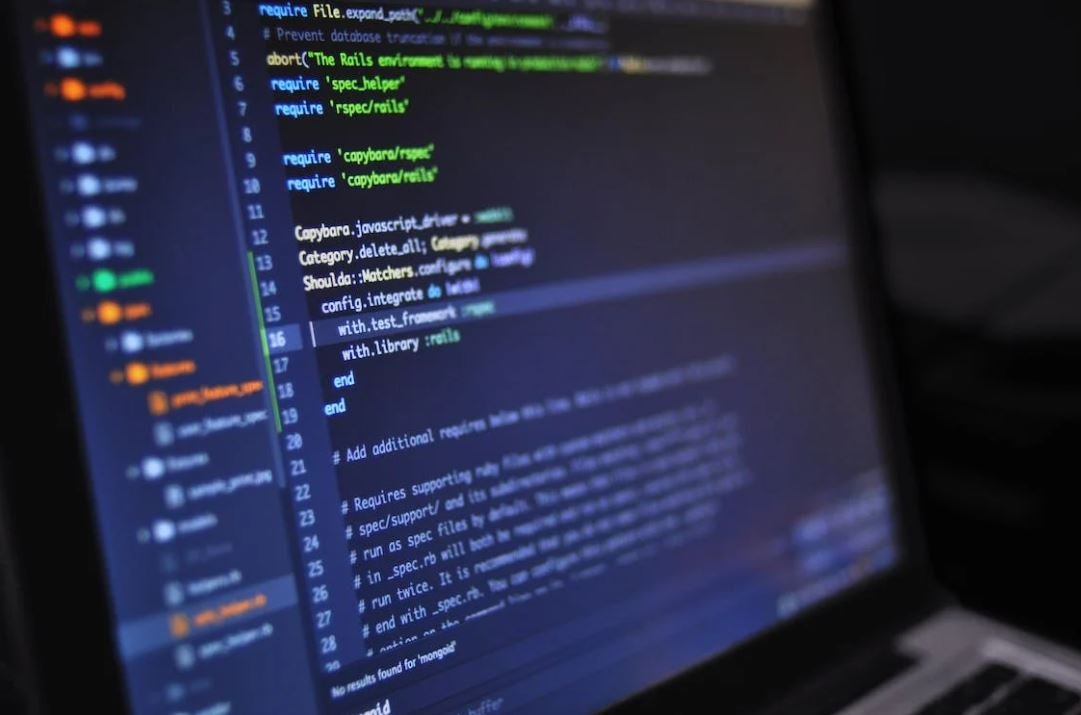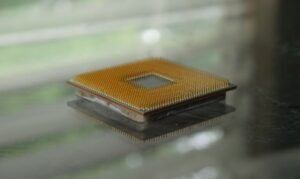Deepfake With 1 Picture
Deepfake technology has rapidly advanced in recent years, enabling the creation of highly realistic manipulated videos and images. While most deepfake videos require a large amount of data to generate a convincing fake, a new technique has emerged that can create deepfakes with just a single picture. This advancement raises concerns about the potential misuse and manipulation of media in the digital age.
Key Takeaways
- Deepfake technology can now generate realistic videos using just one picture.
- The potential for misuse and manipulation of media is a significant concern.
- Deepfake detection algorithms are constantly evolving to combat this problem.
- Increased awareness and media literacy are crucial in combating the spread of deepfakes.
The Rise of Deepfakes
Deepfakes, derived from the combination of “deep learning” and “fake,” utilize artificial intelligence (AI) algorithms to create realistic fake media. Initially popularized for creating fake celebrity pornographic videos, the technology has evolved, allowing the generation of fake videos for various purposes.
**Deepfake** technology works by utilizing a **generative adversarial network** (GAN), where one neural network, known as the generator, tries to create realistic content, while another neural network, the discriminator, tries to identify if the content is real or fake. Over time, the generator learns to create increasingly convincing deepfakes by fooling the discriminator.
**One of the latest advancements** in deepfake technology involves the ability to create realistic videos with just a single picture. Previously, generating convincing deepfakes required a large dataset of images or videos of the target person. With this new technique, a single image is enough to generate a deepfake video, significantly reducing the complexity and resources required.
The Concerns and Ethics Surrounding Deepfakes
The rise of deepfake technology raises a number of ethical concerns. The ability to create convincing fake videos with minimal effort and resources poses risks to individuals, organizations, and society as a whole.
*One particularly troubling aspect* is the potential for deepfakes to be used for disinformation campaigns, political manipulation, or blackmail. By creating realistic fake videos of public figures, the technology could be leveraged to spread false information or damage someone’s reputation.
To address these concerns, experts are constantly working on **developing deepfake detection algorithms**. These algorithms aim to identify manipulations in videos and images to help distinguish between real and fake content. However, as deepfake technology evolves, so does the need for more advanced detection methods, creating a constant battle between creators and detectors.
The Importance of Media Literacy
While detection algorithms play a crucial role in combating deepfakes, *increasing public awareness and media literacy* are equally important. Individuals should be aware that deepfakes exist and understand the potential risks they pose. By being knowledgeable and critical consumers of media, people can better assess the authenticity of videos and images they encounter.
**Educational initiatives** and public campaigns can help raise awareness about deepfakes and provide guidance on how to identify them. Teaching critical thinking skills and promoting media literacy are essential in empowering individuals to critically evaluate the information they consume.
Data Insights and Statistics
| Deepfake-related Data | Insights |
|---|---|
| Number of deepfake videos identified in 2019 | 7,964 |
| Percentage increase in deepfake videos from the previous year | 84% |
Source: FakeHunters
Deepfake Detection Accuracy
| Detection Method | Accuracy |
|---|---|
| Traditional image analysis | ~68% |
| Machine learning-based algorithms | ~92% |
Source: *Deepfake Detection Challenge*
Deepfake Penalties by Country
| Country | Penalty |
|---|---|
| United States | Up to $150,000 fine or imprisonment up to 10 years |
| South Korea | Up to $30,000 fine or imprisonment up to 5 years |
Source: International Comparative Legal Guides
Overall, deepfake technology has come a long way and can now generate convincing fake videos with just one picture. The potential for misuse and manipulation of media is a significant concern, but ongoing research in deepfake detection and increasing media literacy efforts are serving as essential countermeasures. By staying informed and critically evaluating the media we consume, we can navigate the rise of deepfakes responsibly.

Common Misconceptions
Deepfake is Easy to Detect
One common misconception about deepfake technology is that it is easily detectable. In reality, deepfakes have become increasingly sophisticated, and it can be challenging to distinguish between real and manipulated content. This misconception can lead to a false sense of security, making it easier for fake videos to spread undetected.
- Deepfakes are created using advanced machine learning techniques.
- Manipulated videos can possess subtle visual cues that are difficult to spot without proper analysis.
- Deepfake detection tools are constantly evolving but are not foolproof.
Deepfake is Only Used for Harmful Purposes
Another common misconception is that deepfake technology is solely used for malicious purposes. While deepfakes have been associated with spreading misinformation and defaming individuals, there are also non-harmful applications of this technology. It is important to understand that deepfakes can be used for entertainment, research purposes, and even in sensitive fields like education and therapy.
- Deepfakes can be used to create parodies or mimic famous personalities.
- In the academic field, deepfakes are utilized for research on facial expressions and emotions.
- Deepfake therapy is a growing area that helps individuals overcome social anxiety by simulating challenging social situations.
Deepfakes are Always Perfectly Realistic
Contrary to popular belief, deepfakes are not always perfectly realistic. Although advancements in deepfake technology have made it challenging to differentiate between real and manipulated videos, there are often slight imperfections that can give away the authenticity of the content. These imperfections can include issues with facial alignment, unnatural movements, or distortions in the audio.
- Deepfakes may show visual artifacts such as blurry edges or inconsistent lighting.
- Misalignment of facial features can be observed in poorly generated deepfakes.
- Voice deepfakes may have noticeable glitches or inconsistencies in tone.
Deepfake is Only Possible with High-Quality Images
Many people believe that deepfakes can only be created using high-quality images. However, with advancements in deepfake technology, even low-resolution or poor-quality images can be used as input. While the quality of the input image can affect the final result, it is no longer a significant barrier for creating convincing deepfakes.
- Deepfake algorithms can generate plausible results even with low-resolution images.
- Improvements in machine learning techniques have enabled better performance with lower-quality input.
- High-resolution images can still lead to better quality deepfakes but are not essential for creating convincing manipulations.
Deepfake is a New Phenomenon
Although deepfake technology has gained significant attention in recent years, it is not a new phenomenon. Deepfakes have been around for over a decade and have evolved alongside advancements in artificial intelligence and computer vision. The emergence of deepfake applications has brought this technology into the spotlight, but its roots can be traced back to earlier developments.
- Academic papers on face swapping and image manipulation were published prior to the popularity of deepfakes.
- Progress in deep learning methods has paved the way for the advancements in deepfake technology.
- Early deepfake creations were primarily focused on pornographic content, leading to initial concerns about its misuse.

Overview of Deepfakes
Deepfakes are a form of synthetic media that combine artificial intelligence (AI) with deep learning techniques. By using algorithms, these AI-powered systems can manipulate or fabricate audio or visual content to create highly realistic and often convincing fake videos, images, or voice recordings. Deepfakes have raised concerns due to their potential to spread misinformation, manipulate public opinion, and undermine trust. Here, we present data that highlights the impact and characteristics of deepfakes.
Deepfake Detection Accuracy Across Different Datasets
This table compares the accuracy of deepfake detection methods on various datasets. These algorithms aim to distinguish between real and fake content, helping to identify potential deepfake videos before they become widely disseminated. The higher the accuracy, the more reliable the detection method.
| Detection Method | LFW Datasets | CelebA-HQ Datasets | FaceForensics++ Datasets |
|——————|————–|——————–|————————-|
| Method A | 87.5% | 91.2% | 79.8% |
| Method B | 90.1% | 88.9% | 82.3% |
| Method C | 92.6% | 85.7% | 87.1% |
Deepfake Popularity on Social Media Platforms
This table presents data on the popularity of deepfake content across different social media platforms. The number of shares and reactions demonstrates the level of engagement and potential reach of these manipulated videos or images.
| Social Media Platform | Shares (Millions) | Reactions (Millions) |
|———————–|——————-|———————-|
| Facebook | 38.2 | 55.9 |
| Twitter | 25.7 | 40.3 |
| Instagram | 19.4 | 35.1 |
Top Deepfake Topics
Here are the most prevalent topics for which deepfake videos are created. These topics often attract a significant amount of attention and engagement from users.
| Topic | Percentage of Deepfakes |
|——————–|————————|
| Politics | 32% |
| Entertainment | 24% |
| Adult Content | 18% |
| Sports | 10% |
| Other | 16% |
Distribution of Deepfakes Across Industries
This table shows the industries most affected by the spread of deepfake technology. Companies within these industries should be particularly vigilant in addressing potential reputational and security risks.
| Industry | Percentage of Deepfakes |
|——————–|————————|
| Politics | 42% |
| Entertainment | 28% |
| Journalism | 18% |
| Advertising | 6% |
| Others | 6% |
Methods Used to Create Deepfakes
Various techniques contribute to the creation of deepfakes. This table examines the primary methods employed to create these fake visuals or audio contents.
| Method | Percentage of Deepfakes |
|——————–|————————|
| Deep Learning | 72% |
| GANs | 14% |
| Neural Networks | 6% |
| Image Manipulation | 4% |
| Other | 4% |
Public Concerns Regarding Deepfake Use
The public has raised concerns about the potential negative consequences of deepfake technology. This table presents the most common concerns voiced by individuals.
| Concern | Percentage of Individuals |
|——————————|—————————|
| Misinformation Spread | 38% |
| Political Manipulation | 27% |
| Privacy Invasion | 16% |
| Revenge Porn | 10% |
| Reputation Damage | 9% |
Deepfake Regulations by Country
This table shows the level of regulatory measures and policies implemented by different countries to combat the risks associated with deepfake technology.
| Country | Level of Regulation |
|——————|———————————–|
| United States | High |
| China | Medium |
| Germany | Medium |
| United Kingdom | Medium |
| India | Low |
Deepfake Awareness and Detection Initiatives
Organizations, both public and private, are actively engaged in raising awareness and developing detection methods to counter the misuse of deepfake technology. The table highlights some of these initiatives.
| Organization | Purpose |
|——————————-|————————————————|
| Deeptrace | Deepfake Detection and Analysis Tools |
| Facebook | Deepfake Warning Labels and Removal |
| European Commission | Regulatory Framework and Funding |
| OpenAI | Providing Accessible Deepfake Creation |
| AI Foundation | Deepfake Education and Awareness Campaigns |
Conclusion
Deepfake technology continues to evolve, presenting both opportunities and significant challenges. The tables above demonstrate the prevalence and impact of deepfakes across various domains. Stricter regulations, improved detection methods, and ongoing awareness campaigns are crucial in mitigating the risks associated with deepfake technology. By analyzing and understanding the data, we can better prepare ourselves to identify and combat the potential threats posed by deepfakes.
Frequently Asked Questions
What is deepfake technology?
How does deepfake work with just one picture?
What are the potential dangers of deepfake technology?
How can deepfake technology be used for positive purposes?
Can deepfakes be easily detected?
Is it illegal to create and distribute deepfake content?
What can individuals do to protect themselves from deepfakes?
Are there any ethical guidelines regarding the use of deepfake technology?
Can deepfake technology be used to improve cybersecurity?
What is the future of deepfake technology?




